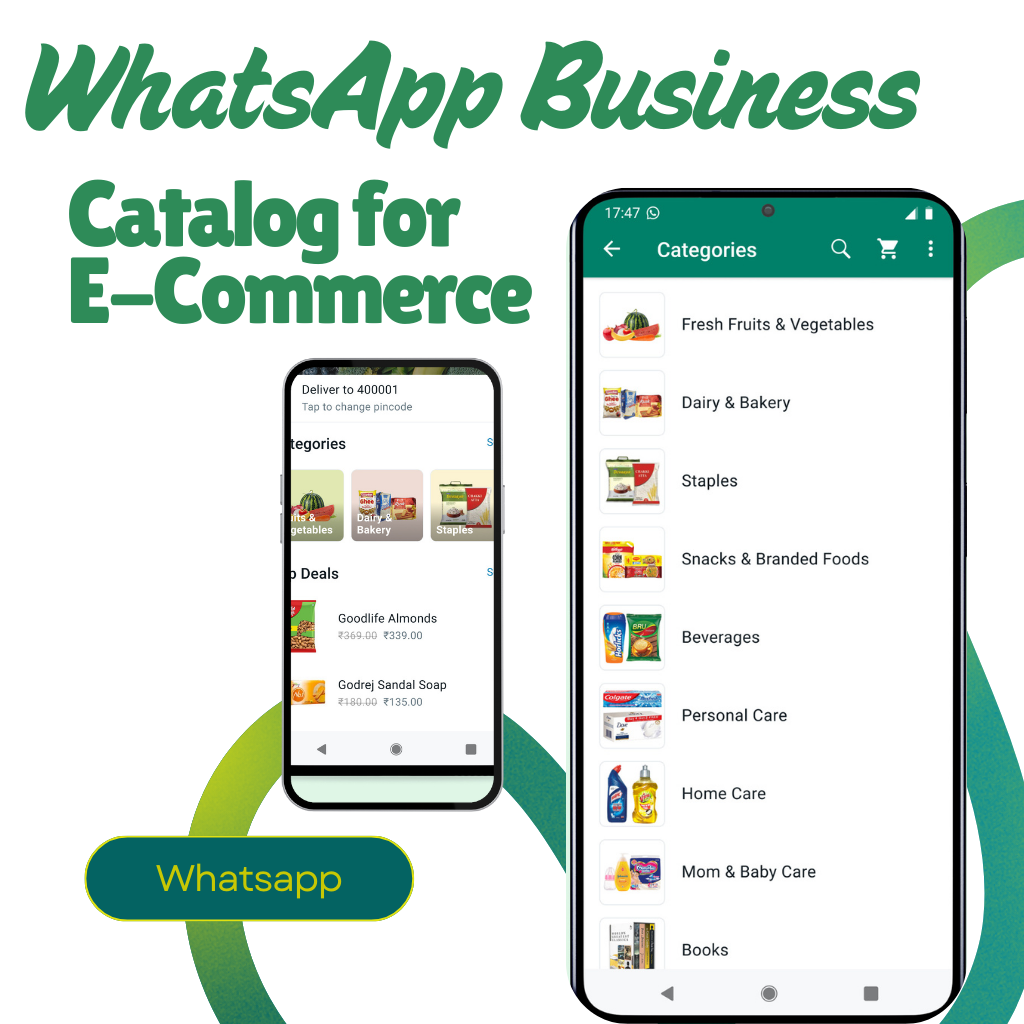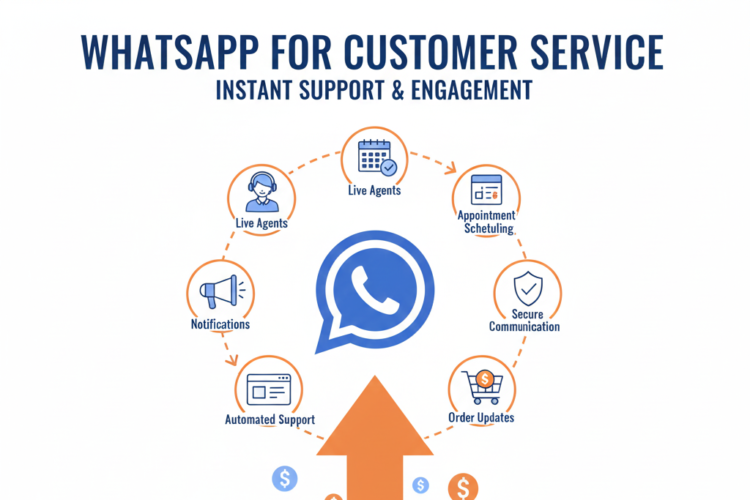
How to Use WhatsApp Business Catalog for E-Commerce
Introduction
In today’s digital era, businesses are constantly looking for innovative ways to connect with customers and streamline the shopping experience. WhatsApp Business Catalog is a game-changer for e-commerce brands, allowing them to showcase their products directly within the app. With over 2 billion users worldwide, WhatsApp provides a direct and convenient way to engage with potential customers, simplify product browsing, and drive sales.
This guide will explore how to set up and optimize your WhatsApp Business Catalog, its key benefits, and strategies to maximize its effectiveness for e-commerce.
1. Understanding WhatsApp Business Catalog
a) What is WhatsApp Business Catalog?
WhatsApp Business Catalog is a built-in feature within the WhatsApp Business app that allows businesses to display their products or services in an organized manner. Customers can browse the catalog, view product details, and directly place inquiries within WhatsApp.
b) Key Benefits of WhatsApp Business Catalog for E-Commerce
-
Convenient Shopping Experience: Customers can view products without leaving WhatsApp.
-
Easy Product Discovery: A structured catalog makes browsing effortless.
-
Direct Customer Interaction: Seamless chat-to-cart experience enhances conversions.
-
Cost-Effective Marketing Tool: No need for a separate e-commerce website.
-
Wider Reach: Ideal for small businesses and local retailers.
2. Setting Up WhatsApp Business Catalog
a) Prerequisites for Using WhatsApp Business Catalog
-
Install the WhatsApp Business App (available on iOS and Android).
-
Register with a valid business number.
-
Complete your WhatsApp Business Profile (business name, description, address, etc.).
-
Ensure you have a strong internet connection for smooth setup.
b) Step-by-Step Guide to Creating Your Catalog
-
Open WhatsApp Business App and go to the menu.
-
Select Business Tools > Catalog.
-
Tap on Add Product or Service.
-
Upload high-quality images of your products.
-
Enter product details including name, price, description, and optional links.
-
Click Save, and your catalog will be available for customers.
c) Best Practices for Product Listings
-
Use high-resolution images that accurately represent your products.
-
Write compelling product descriptions with key benefits.
-
Keep pricing transparent to avoid unnecessary queries.
-
Organize products into categories for easy navigation.
-
Update the catalog regularly to reflect new arrivals or promotions.
3. Optimizing WhatsApp Business Catalog for Sales
a) Enhancing Customer Engagement
-
Quick Responses: Use WhatsApp’s Quick Replies feature to respond faster.
-
Broadcast Lists: Send updates about new arrivals, discounts, and offers.
-
Personalized Recommendations: Suggest products based on previous interactions.
-
Live Demos: Use WhatsApp Status or video calls to showcase products.
b) Promoting Your WhatsApp Catalog
-
Share the catalog link on social media, websites, and email marketing campaigns.
-
Use QR codes on packaging or promotional materials for direct access.
-
Run WhatsApp Ads (Facebook and Instagram) that lead to your catalog.
-
Leverage Influencers to share the catalog with their followers.
c) Driving Conversions with WhatsApp Business Features
-
Cart & Checkout: Enable customers to select multiple products before placing an order.
-
Click-to-Chat Links: Make it easy for users to start a conversation with one click.
-
Payment Integration: If available in your region, integrate WhatsApp Pay for seamless transactions.
4. Leveraging WhatsApp for Customer Support & Order Management
a) Handling Customer Inquiries
-
Use Chat Labels: Organize chats by order status (e.g., New Order, Pending Payment, Shipped).
-
Automate Replies: Set up automated greetings and FAQs.
-
Resolve Queries Quickly: A fast response increases customer trust.
b) Managing Orders Efficiently
-
Confirm Orders via WhatsApp: Send order summaries before payment.
-
Share Tracking Information: Keep customers updated on shipping status.
-
Follow Up Post-Purchase: Request feedback and reviews to build credibility.
c) Retaining Customers for Repeat Sales
-
Exclusive WhatsApp Offers: Provide discounts for returning customers.
-
Loyalty Programs: Reward frequent buyers with points or special deals.
-
Engaging Content: Share useful tips, tutorials, or styling ideas related to your products.
5. Measuring Success and Optimizing Performance
a) Key Metrics to Track
-
Number of Catalog Views: Indicates interest in your products.
-
Engagement Rate: Messages received vs. sent.
-
Conversion Rate: Number of purchases compared to inquiries.
-
Customer Retention Rate: Percentage of repeat buyers.
b) Tools for Performance Analysis
-
WhatsApp Business Analytics: Check message open rates and response times.
-
Google Analytics: Track traffic from WhatsApp to your website.
-
Third-Party CRM Integration: Connect WhatsApp with tools like HubSpot or Zoho for better tracking.
c) Improving Based on Data Insights
-
If engagement is low, refine your product descriptions and images.
-
If conversion rates are low, optimize your sales messaging and offers.
-
If retention is weak, enhance customer support and follow-ups.
Conclusion
WhatsApp Business Catalog is a powerful tool for e-commerce businesses looking to enhance customer engagement and drive sales. By setting up a well-structured catalog, leveraging WhatsApp’s communication features, and continuously optimizing for performance, businesses can create a seamless shopping experience for their customers.
With the right strategies, WhatsApp can become not just a messaging platform but a vital sales channel that bridges the gap between businesses and their customers. Start implementing these best practices today and unlock the full potential of WhatsApp Business for your e-commerce store.
Author



